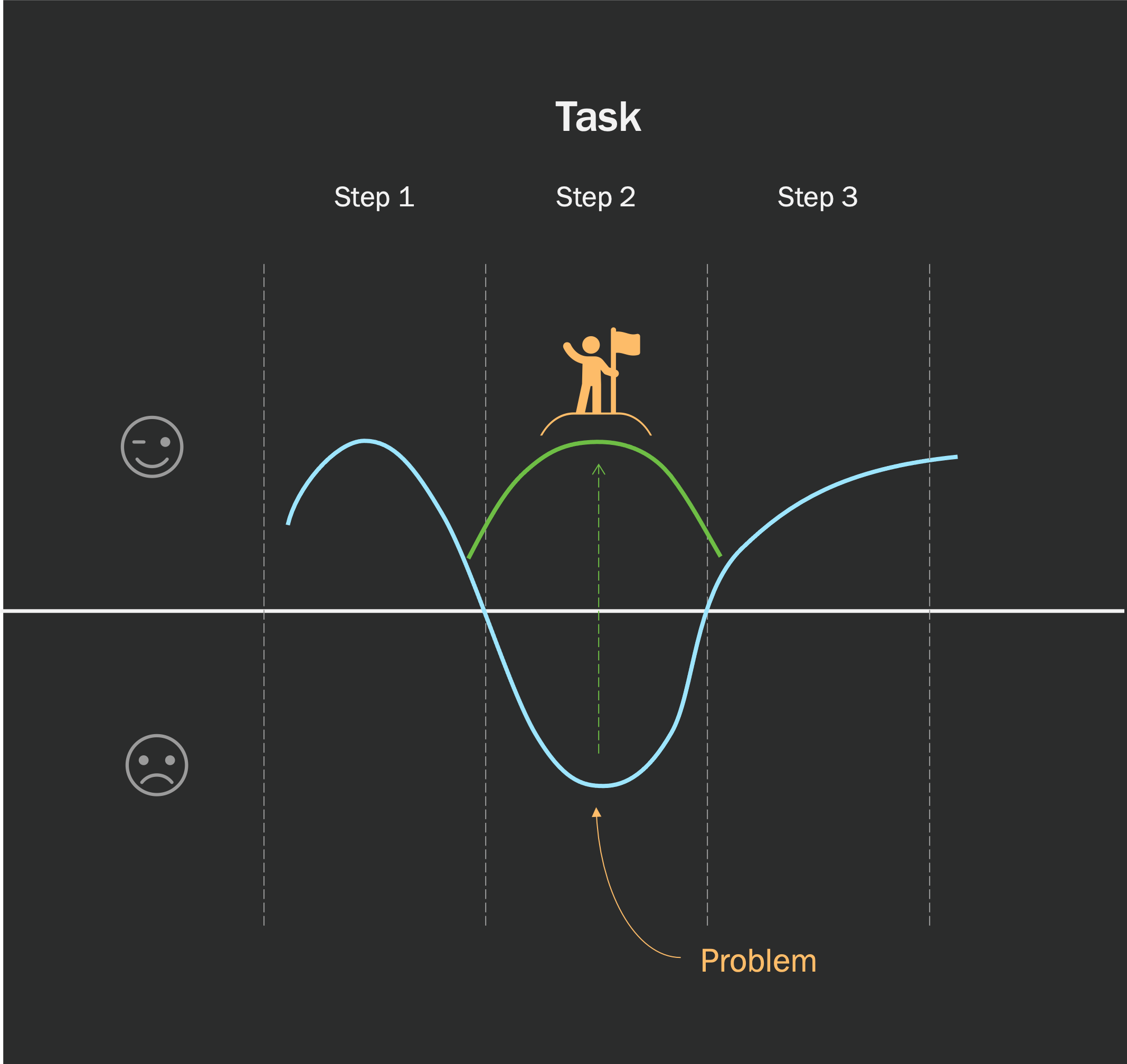Design is often considered as ‘the way things look’, which is of course not wrong. Yet, a major part of the design process is the definition of the (right) problem to solve – ‘What is it that when solved will benefit the users and help the organization reach its goals?

In the previous blog, I talked about how designers often get involved in projects when the problem and the goals have already been defined and the solution is on its way. Even in such situations, design thinking can help sharpen these goals with the human in mind. Let’s have a look at how we can make this process efficient and effective.
Exploring and refining the problem through design
A problem and the ways to solve it are somewhat fluid; meaning they need to be refined on the go. We could have a situation where we have a hypothesis for user requirements and maybe an idea on how those should take form. In these scenarios, it makes sense to use rapid design prototypes to test our assumptions, instead of going into building something that we are yet not sure of.
How does it work? We make a minimum viable design based on these first insights. The aim is to make an initial representation of how the interaction could (re)flow. When the client and I discuss this initial draft, new insights and problems emerge. Suddenly we both get more clarity about what it is that we are trying to improve for the users. What happened is that by making a quick design prototype and using it as an anchor, we created a common understanding of what it is exactly that we need to tackle. If we do this with end-users as well, we have a design AND a research tool at once, speeding up the process. The designer gets to learn more about the tasks of the users, their goals and can identify concrete action points. It may sound counterintuitive because you give form to something without really knowing all the background information yet. However, it is a safe way to fail, find out the right issues and have a higher chance of getting the final result right.
Mapping the problems of multiple stakeholders
Are there complex processes or multiple stakeholders involved and it isn’t clear how everything flows? Scared of bringing too many opinions to the table? Fear not, designers love getting in the middle of the chaos and making sense of it!
In a project for a province, we used a mix between a flowchart and a storyboard to put on paper what we learned from our research on how incidents were managed. In the map, we highlighted who does what, what tools the actors use, what the official procedure is and what the actual way of working and communication shortcuts are. We made it only visual, with no lengthy descriptions. This mapping served both us and the client. For us it was a way to easily communicate our findings, ask for feedback and find out more. For the stakeholders, it was a simple representation of processes, which made it easier to identify issues. By bringing these stakeholders around a table and asking them to provide feedback, we could gather the perspectives – priorities, concerns, wishes, etc.- of all the actors involved. Making the insights visual, brought everybody on the same page and provided the group with a clear starting point to talk about. Using design tools enhances the creation of common ground among stakeholders and the designers as well. By presenting a situation simply and insightfully, mostly by using visual tools, the identification of the issues becomes easy.
Clients who see this process in action realize that taking time to dive into the processes and find out the real problems pays off in the development phase.
In the next blog, we’ll dive more into the creative part of it: translating findings into ideas. If you want to know more, you can visit our website or contact me at [email protected]